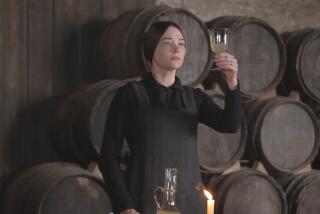An Affair to Remember : THE TRIAL OF MADAME CAILLAUX, <i> By Edward Berenson (University of California Press: $24.95; 291 pp.)</i>
- Share via
On the evening of March 16, 1914, an elegant Parisian walked into the offices of Le Figaro. “Do you know why I have come?” she asked the editor.
“Not at all, Madame,” he replied politely.
Those were Gaston Calmette’s last words. From her furs the visitor produced a Browning automatic pistol and fired six times. As office workers closed in, she warned them not to touch her. “ Je suis une dame! “ she declared. “I am a lady!”
Alors , that explained it all. The murderess was Henriette Caillaux, wife of a wealthy and influential cabinet minister. For months the newspaper Le Figaro had been hounding him for his leftist politics, his pro-German sympathies and, finally, his amorous career. Only a few days before, the paper had obtained a 13-year-old love letter from Joseph Caillaux to his former mistress. (He had shocked many Parisians by marrying her, and then shocked them further by divorcing her and marrying Henriette.) Le Figaro splashed the steamy contents across its front page.
Until then, Mme. Caillaux had suffered stoically, but this was too much. “They will end up by killing my husband,” she told a friend. The next day she committed justifiable homicide: What other course was left for une dame ? Such, at least, was her defense at what French periodicals labeled “the trial of the century.”
This was something of a Gallic exaggeration. Another trial, that of Western civilization, was scarcely two months away. It would be called World War I.
Edward Berenson’s ironic and compelling history, “The Trial of Madame Caillaux,” examines a society so intoxicated by this courtroom drama that it scarcely noticed the soldiers marching toward the Maginot line. “In Paris,” Berenson observes, “the trial was narrated by the capital’s first chroniqueurs , drawn by an army of artists, photographed for the growing number of picture weeklies. Not until 27 July, a day when a trial recess produced no news, did the diplomatic crisis begin to rival Madame Caillaux for front-page attention.”
The defendant was tried twice: by the jury and by the journalists. A liberal daily saw a tragic victim of circumstance: “With her eyes lowered, her pale coloring, her blonde hair, Madame Caillaux seemed genuinely mired in unhappiness.” But a rightist paper portrayed her as remorseless, “almost neuter with her thin nose, her thin lips, her heavy profile. . . .”
The unsexing of Mme. Caillaux was a deliberate strategy: In prewar France gunning down an opponent was considered a male prerogative. After seven days of testimony, notes Berenson, the prosecutor “presented Henriette as more than female, so unwomanly as to merit no indulgence from the court.” The defense attorney countered with his ultimate weapon: patriotism. The court should not punish his client, he insisted. Instead, we must “preserve our anger for our enemies without.”
It would be unsporting, even at the remove of 78 years, to reveal the verdict. Berenson maintains the suspense for six compelling chapters as he analyzes the Caillauxes, who were hardly the loving couple they appeared to be; Gaston Calmette, whose elaborate manners concealed unbridled ambition; and all the other characters, central and peripheral, who kept Paris mesmerized until she awoke to the guns of August.
The timing of l ‘ affaire Caillaux , as the author concludes, marked the end of the Belle Epoque. He neglects to mention that it also ushered in something new and ominous: the courtroom as national theater. La dame has much to answer for besides the murder of Calmette. When she pulled that trigger she began the era that would culminate in C-Span, the National Enquirer and People magazine.
More to Read
The biggest entertainment stories
Get our big stories about Hollywood, film, television, music, arts, culture and more right in your inbox as soon as they publish.
You may occasionally receive promotional content from the Los Angeles Times.










